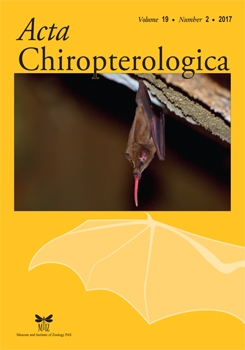In the Philippines, little is known beyond the most basic information on the ecology and biogeography of fruit bats. This is aggravated by the increasing risks on their populations, particularly in primary lowland forests, the most threatened habitat in the country, which these species inhabit and also where chiropteran diversity is highest. In this study, the spatial heterogeneity of fruit bats within a primary lowland forest in Palanan, Isabela, northeastern Luzon was investigated. In addition, habitat partitioning patterns were compared with wing morphology variations. Mist nets were used to sample two vertical strata and three forest landscapes. Wing loading and aspect ratio were measured for all species captured. A total of 1,243 fruit bats representing eight species were caught from a sampling effort of 398,736 m2·h. All species were captured in the canopy, while only six species were captured in the understory. All species were also captured along ridges and forest edges, while only seven were captured along streams. Based on permutational MANOVA, a significant difference was found between the species assemblages in the understory and canopy, but not among ridges, streams, and forest edges. At the population level, Kruskal-Wallis tests were performed on capture rates per species. All eight species exhibited strong preference for the canopy, while only two species were observed to have significantly different capture rates across forest landscapes. Wing morphology patterns based on wing loading and aspect ratio did not show consistent association with vertical strata preference. The varying capture rates of bats along ridges, streams and forest edges may have been influenced by their feeding behavior. This study demonstrates the spatial heterogeneity of fruit bats across vertical strata and across forest landscapes, the most significant of which is the preference for the canopy. Possible factors that could explain these patterns include fruit availability, a cluttered habitat, and tree species distribution, which should be assessed in future studies.
How to translate text using browser tools
1 December 2017
Spatial Heterogeneity of Fruit Bats in a Primary Tropical Lowland Evergreen Rainforest in Northeastern Luzon, Philippines
Mariano Roy Duya,
Jay Fidelino,
Perry Ong
ACCESS THE FULL ARTICLE

Acta Chiropterologica
Vol. 19 • No. 2
December 2017
Vol. 19 • No. 2
December 2017
habitat partitioning
landscape ecology
Philippines
Pteropodidae
vertical stratification




